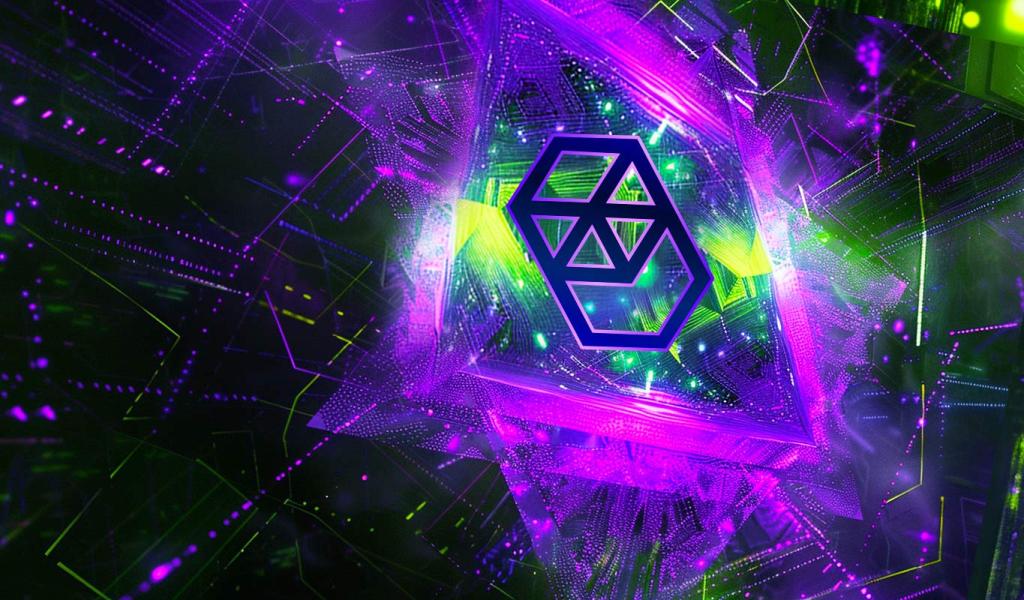
What is chain abstraction? Here’s how this idea helps simplify blockchain for everyone
Key Takeaways
- Chain abstraction simplifies managing multiple blockchain networks.
- It addresses usability issues by unifying user interfaces and transactions.
Share this article
Chain abstraction here, chain abstraction there. You’ve probably heard it by now when people talk about “Web3 UX” and other such cool-sounding words and ideas. Well, what the heck is it?
Formally, chain abstraction is an emerging concept in blockchain tech that aims to simplify the user experience of interacting with multiple blockchain networks. If you’ve ever wondered how “mass adoption” or, that is to say, the broader adoption of blockchain-based technologies could be spread, chain abstraction is one of the ways to achieve this.
At its core, chain abstraction seeks to remove the complexities and manual processes typically required when users engage with different blockchains, creating a more seamless and user-friendly interface for decentralized applications (dApps).
The need for chain abstraction
As the blockchain ecosystem has expanded with multiple use cases and niche needs, users are often required to navigate multiple networks, each with its own set of protocols, tokens, and interfaces. This fragmentation creates significant barriers to entry and usability issues for both newcomers and experienced users alike.
We can identifly some of the key challenges here:
-
Managing multiple wallets and addresses across different blockchains
-
Manually bridging assets between chains
-
Having to deal with various gas tokens and fee structures
-
Switching networks to access different dApps
-
Understanding the technical differences between blockchains
Chain abstraction aims to solve these pain points by creating a unified experience that hides the underlying complexity of interacting with multiple blockchains. The goal is to make blockchain technology more accessible and user-friendly, paving the way for wider adoption.
How does chain abstraction work?
While there is no single agreed-upon implementation of chain abstraction, several key components are commonly associated with how the concept is done.
-
Universal accounts: Allowing users to interact with multiple blockchains using a single account or address, eliminating the need to manage separate wallets for each network.
-
Cross-chain liquidity: Enabling users to leverage their assets across different chains without manually bridging tokens, creating a more fluid and interconnected ecosystem.
-
Unified gas payments: Simplifying transaction fee payments by allowing users to pay gas fees with any token, regardless of the network they are interacting with.
-
Seamless dApp interactions: Letting users engage with decentralized applications across various blockchains without needing to switch networks or understand the underlying infrastructure.
These components work together to create an abstraction layer that shields users from the technical complexities of blockchain interactions, allowing them to focus on the actual utility and functionality of dApps.
Benefits and potential impact
Implementing solutions based on the concept of chain abstraction could have far-reaching implications for the crypto and blockchain industry. How exactly would chain abstraction help us?
Improved user experience: By removing technical barriers, chain abstraction can make blockchain technology more intuitive and accessible to a broader audience. This improved UX is crucial for driving mainstream adoption of decentralized applications and services.
Enhanced interoperability: Chain abstraction promotes greater connectivity between different blockchain networks, allowing for more seamless value transfer and data exchange across the ecosystem.
Accelerated innovation: Developers can focus on building innovative dApps without being constrained by the limitations of a single blockchain or worrying about cross-chain compatibility issues.
Increased liquidity: As users can more easily move assets between chains, overall liquidity in the ecosystem may improve, benefiting decentralized finance (DeFi) applications and traders.
Reduced fragmentation: Chain abstraction could help consolidate the currently fragmented blockchain landscape, creating a more cohesive and efficient ecosystem.
Chain abstraction is an emerging concept in blockchain tech that aims to simplify the user experience of interacting with multiple blockchain networks. If you’ve ever wondered how “mass adoption” or, that is to say, the broader adoption of blockchain-based technologies could be spread, chain abstraction is one of the ways to achieve this.
At its core, chain abstraction seeks to remove the complexities and manual processes typically required when users engage with different blockchains, creating a more seamless and user-friendly interface for decentralized applications (dApps).
The need for chain abstraction As the blockchain ecosystem has expanded with multiple use cases and niche needs, users are often required to navigate multiple networks, each with its own set of protocols, tokens, and interfaces. This fragmentation creates significant barriers to entry and usability issues for both newcomers and experienced users alike.Challenges and considerations
While chain abstraction holds great promise, several challenges need to be addressed. For one, there’s the matter of technical complexity.
Creating truly seamless cross-chain interactions requires sophisticated infrastructure and protocols that can securely and efficiently handle transactions across multiple networks, but this requires significant resources on the part of those who would build it. With the crypto industry’s renowned volatility, it maybe difficult for investors and venture capital to secure a stable environment for building these.
Another concern is security. As chain abstraction solutions often involve intermediary layers or protocols, ensuring the security and integrity of cross-chain transactions is paramount. While security can be considered to be part and parcel of how protocols and major blockchain infrastructures are built, the need for audits from third-party security firms surfaces, and even then, the quality and standards adhered to for such audits must also need to be agreed on, at least to some degree.
Now let’s talk about standardization. The lack of widely adopted standards for chain abstraction could lead to fragmentation within the abstraction layer itself, potentially creating new interoperability issues. There’s also certain associated risks when it comes to centralization: some chain abstraction solutions may introduce centralized components, which could compromise the decentralized nature of blockchain networks if not carefully designed.
As chain abstraction blurs the lines between different blockchain networks, navigating the complex regulatory landscape across various jurisdictions may become all the more challenging, and compliance with regulation would certainly face challenges, given how differing jurisdictions have differing frameworks on crypto and digital assets.
Chain abstraction represents a crucial step towards creating a more user-friendly and interconnected ecosystem, but it may just be in for the long haul, a protracted battle if you may.
By abstracting away the complexities of blockchain interactions, this approach has the potential to significantly lower the barriers to entry for new users and unlock new possibilities for developers and businesses building on blockchain technology. However, overcoming the technical and regulatory challenges associated with chain abstraction will be critical to realizing its full potential and driving wider adoption of decentralized technologies.
Share this article
Go to Source
Author: Vince Dioquino








